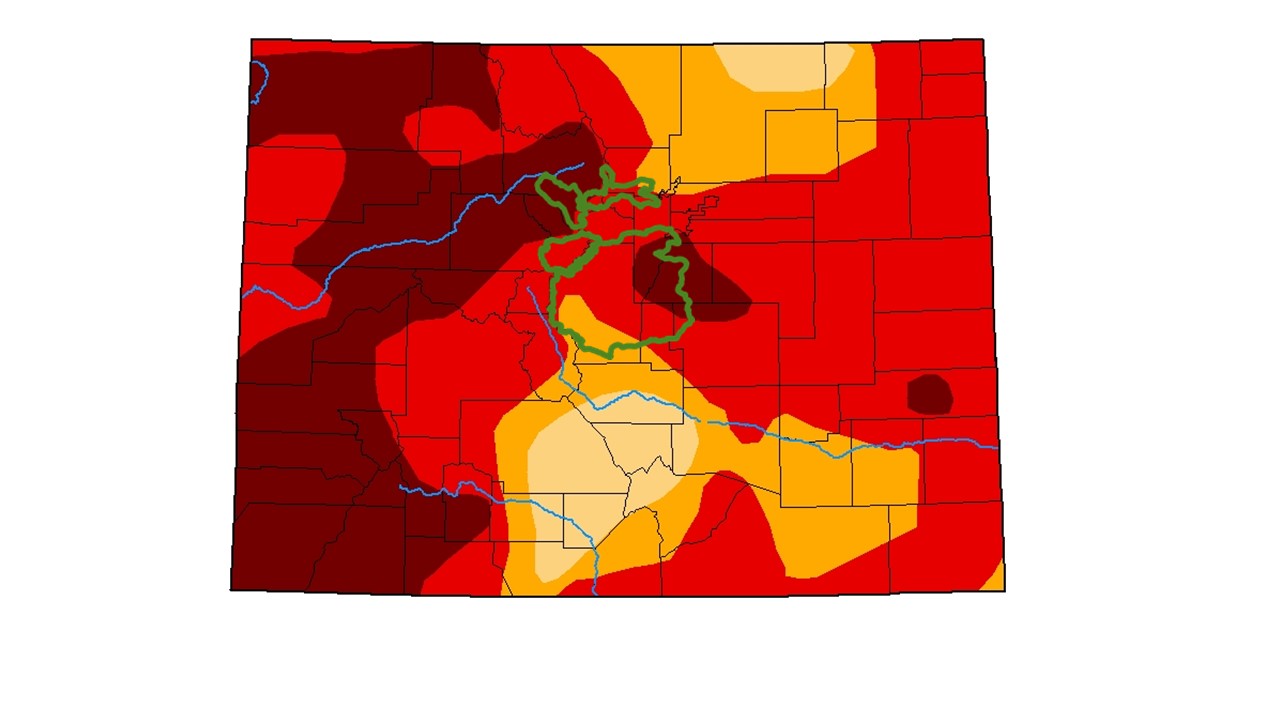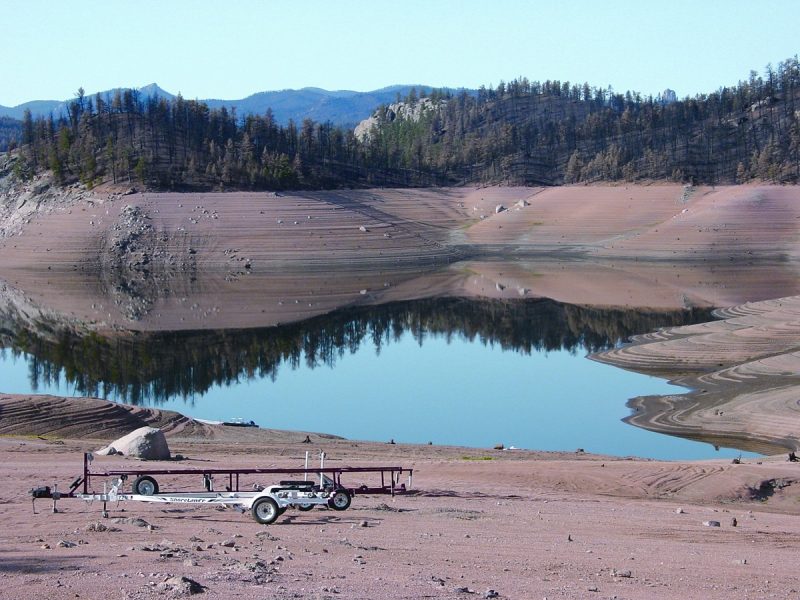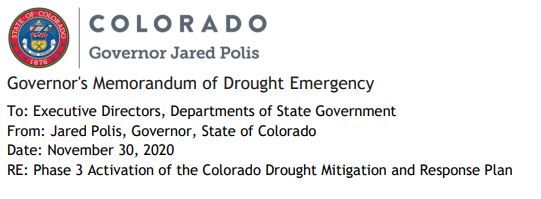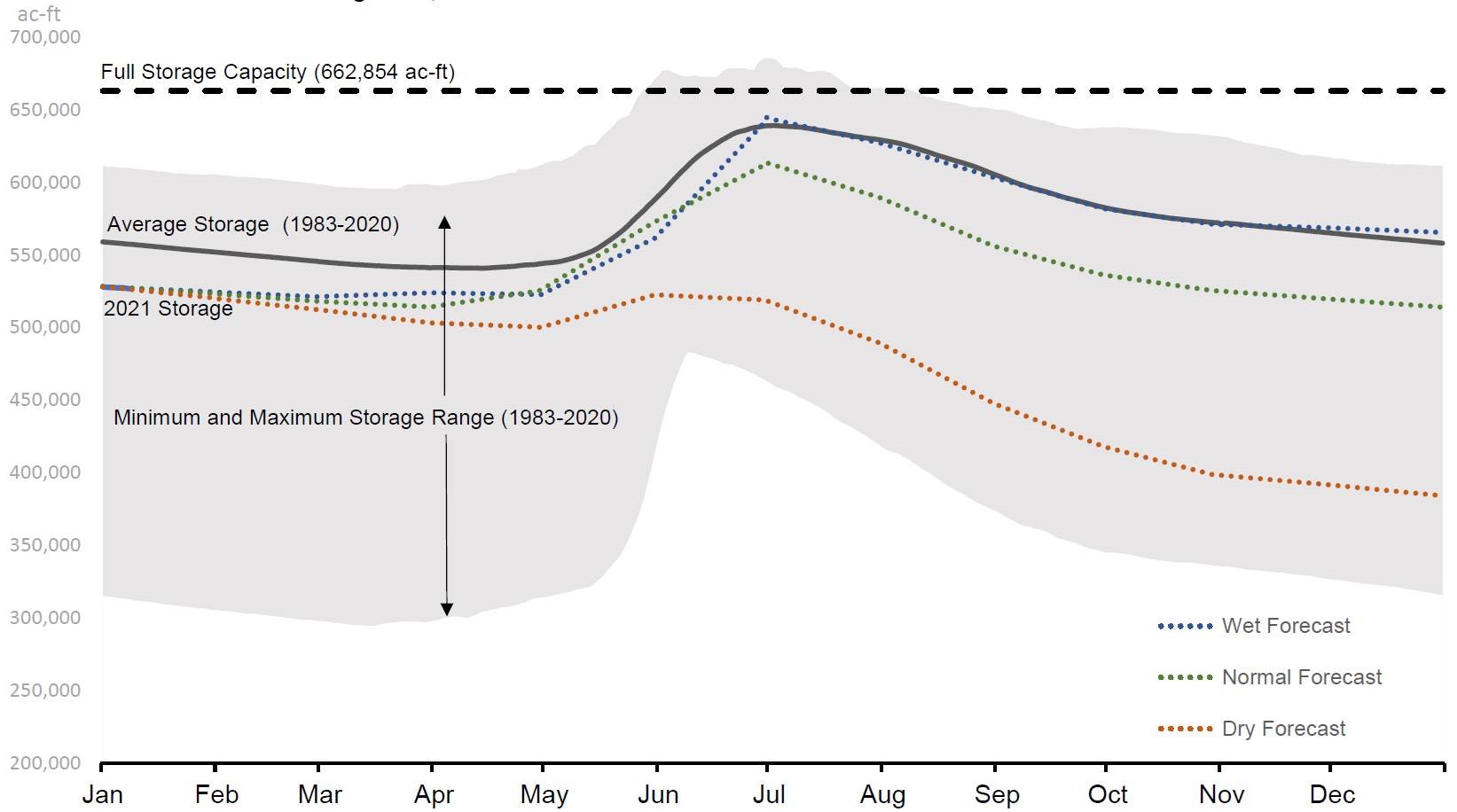
Early season snow doesn’t erase severe statewide drought
Despite some blips of snow this season, the angry red splotches of drought continue to scar Colorado on the U.S. Drought Monitor map.
And water planners say a strong, wet winter will be needed to fill Denver Water’s reservoirs to 100% of capacity this year.
“The hot, dry summer really impacted soil moisture. You saw that when one of the biggest wildfires we had in 2020 (the East Troublesome fire, Colorado’s second-largest wildfire in history) started in October,” said Nathan Elder, Denver Water’s water supply manager.
“We’ll need above-normal snowpack to get to a normal runoff, because the soil will take a portion of the runoff before we see the water in the streams or our reservoirs,” he said.
Water planners tick through a list of issues that they’re watching closely:
- Snowpack conditions in mid-January were below normal in Denver Water’s collection system.
- The majority of Denver Water’s collection system is considered to be in “extreme drought” on the U.S. Drought Monitor map.
- Soil moisture measurements are indicating conditions rank in the bottom five for moisture for 30 years of measurements between 1981 and 2010.
- During the spring runoff, that thirsty, dry soil will snatch water from the melting snow, meaning there likely will be less water available for streams and reservoir storage. Forecasts currently indicate streamflow later this year could be 67% to 83% of average.
- Denver Water’s reservoir storage stands at 78% full, a few percentage points below normal for January.
But, but, but … it’s only mid-January.
The bulk of the winter is still ahead of us, including Colorado’s snowiest months of March and April, Elder said.
And three-month climate outlooks predict “slightly greater odds” for below-normal precipitation above Denver Water’s collection system and across the metro area.
So while planners are watching the weather hoping big storms dump lots of snow, they’re also laying the groundwork for contingency plans — just in case.
“We want to be ready, no matter what,” said Jason Finehout, the coordinator of Denver Water’s Water Shortage Committee.
“If things don’t improve, it’s possible that Denver Water could move to drought restrictions at some point this year,” he said.
Information sharing has already begun, following the Nov. 30, 2020, announcement from Gov. Jared Polis that the state would shift to phase 3 of its State Drought Mitigation and Response Plan and fully activate its drought mitigation and response plan.
This shift was done with the support of a statewide Water Availability Task Force, a group of federal and state climatologists, water experts and representatives from water utilities across Colorado — including Denver Water — that meet regularly throughout the year.
Polis’ announcement also activated the Municipal Water Impact Task Force that brings together utilities to share information, insights and planning resources, which Denver Water is also part of.
As for Denver Water’s current conditions, reservoir levels are holding steady, and winter water use — when lawns and gardens are frozen in hibernation — is typically at its lowest point in the year.
“Our reservoir storage is below normal, but it’s not that much below normal for this point in the year,” Elder said.
As of Jan. 11, Denver Water’s reservoir storage stood at 78%, down about 4 percentage points from normal.
And forecasts for the rest of the winter are — conflicting, Elder said.
“I read two forecasts this morning. One said that after Jan. 16 the jet stream will shift and the storms will stay north of us. The other said that starting Jan. 16 we’re in for a stormier pattern, with more storms coming to Colorado,” he said.
“As we all know about our weather, forecasting more than a few days out is difficult and there’s a lot of uncertainties. That’s why we’re meeting and making sure that we are prepared for conditions, whatever they may be.”
One factor in question is how much of the snowmelt will be absorbed by thirsty soils — parched by last summer’s record-breaking hot, dry summer — and never reach the streams feeding our reservoirs.
But with the bulk of the winter still ahead, those months are time for water utilities and weather experts to meet, share information and lay plans that can be implemented if needed, Finehout said.
Knowing that the hot, dry months seen in 2020 also hold serious implications for the rivers and streams along the headwaters of the Colorado River, an area where Denver Water gets half of its water supply, the utility also is sharing information with West Slope partners and regional entities, including the Colorado Water Conservation Board and the Colorado Climate Center.
“The less water we use here means there’s more water that remains in reservoirs to enable us to get through dry periods,” Elder said.
At the Denver metro level, Denver Water is working with other regional water providers to create a metro area drought coordination group. Such a group could help coordinate drought preparedness and messaging to residents across the front range.
“While this behind-the-scenes work is critical in preparing us for an extended drought, Denver Water staff will continue to work closely with our customers on efficient water use,” Finehout said.
People throughout Denver Water’s service area have done an amazing job to reduce water use. They consistently use less water, even during last summer’s scorcher, than they did in similarly hot, dry stretches prior to the drought of 2002, Finehout said.
Since 2005, Denver Water has approached every summer with a standard set of water efficiency rules for customers. Those rules prohibit watering during the heat of the day between 10 a.m. and 6 p.m. and limit watering to three days per week.
The utility also has tiered rate structure is based on a philosophy of the more you use, the more you pay, which also encourages lower water use.
“Customers play a big role here. And just like we’re making preparations for different scenarios, customers too can make their own preparations — like checking their indoor fixtures for leaks and identifying changes they could make to their landscape to lower their water use outside this summer,” Finehout said.
“We are all in this together, and every little bit helps — including hoping for a great snow season.”
Information about reducing water use inside and outside, including rebate information for eligible new water-efficient toilets, can be found at denverwater.org/BestPractices.





